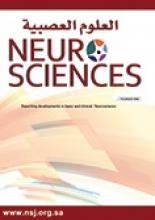9 March 2016 - After a three-day consultation on Zika research and development, international experts, convened by WHO, have agreed on top priorities to advance R&D for Zika medical products.
The following tools were prioritized as the most viable options to help fight the spread of Zika virus in the immediate future:
Multiplex tests for ‘flaviviruses’ (viruses related to Zika, such as dengue, chikungunya), in addition to more traditional tests;
protective vaccines based on killed virus (or other non-live) preparations for women of childbearing age; and
innovative vector control tools that reduce the mosquito population.
“Zika virus induces a mild and mostly harmless infection in the majority of patients,” indicated Dr Marie-Paule Kieny, Assistant Director-General in charge of R&D at WHO. “For that reason medicines to treat it seem less of a priority at this stage. The most pressing need is the development of diagnostic and preventive tools to address the current R&D gap and protect pregnant women and their babies.”
As of 2 March, 67 companies and research institutions were already working on a number of products (31 on diagnostics, 18 on vaccines, 8 on therapeutics, 10 on vector control), which are at various stages of early development. No vaccine or therapeutic has yet been tested on humans.
Vaccines
Experts agreed that the development of a vaccine is a major priority to respond to epidemics in the future. Vaccination of pregnant women and women of childbearing age is the main target, and pragmatic strategies will be needed to fast-track the development of a safe and effective product.
Work is underway for the development of an emergency vaccine target product profile. The target product profile will serve as a guide to consult and build consensus on regulatory requirements for Zika vaccine evaluation and registration. A draft target profile will be submitted to a public consultation in the coming weeks, with a view to having a final profile in May.
Diagnostics
Over 30 companies are working on or have developed potential diagnostic tests. There is general support for the development of a target product profile for a multiplex test that can diagnose dengue, chikungunya and Zika viruses. A first draft is ready and this too will undergo public consultation before finalization in mid-April.
WHO continues to encourage manufacturers to apply to the WHO Emergency Use, Assessment and Listing procedure for a quality and performance evaluation of their products.
Emergency use assessment and listing procedure for Zika virus disease
Vector control
Vector control experts have clearly stated that as traditional interventions – such as insecticide spraying – have not had significant impact on dengue transmission the same might apply to Zika. They also cautioned that extreme rigour needs to be applied in evaluating novel tools, such as Wolbachia, recombinant and irradiated mosquitoes. An emergency meeting of the WHO Vector Control Advisory Group next week will fine-tune evaluation methods and a target product profile for innovative techniques.
The R&D community has responded vigorously to the need for Zika medical products and innovative vector control measures; the pipeline of candidate products is still growing. A major advance compared to the Ebola product R&D response of 2014-2015 is the speed with which data and experiences are being shared across countries.
“While product development is at an earlier stage than that for Ebola,” concluded Dr Marie-Paule Kieny, “R&D methods and coordination among partners is much more advanced, largely thanks to the lessons learnt during the Ebola epidemic.”
Available from: http://www.who.int/mediacentre/news/notes/2016/research-development-zika/en/
- Copyright: © Neurosciences
Neurosciences is an Open Access journal and articles published are distributed under the terms of the Creative Commons Attribution-NonCommercial License (CC BY-NC). Readers may copy, distribute, and display the work for non-commercial purposes with the proper citation of the original work.






